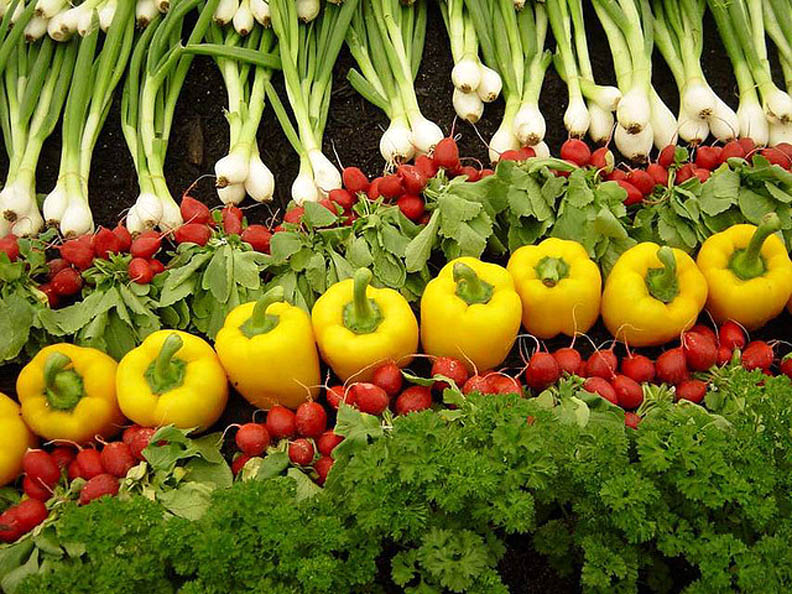
Price tumble for fresh market vegetables
A steady supply of fresh-market vegetables is causing price reductions for farmers.While it is expected that demand for fresh vegetables will continue a “slow growth” as consumers continue to improve their diets, prices are not expected to climb, which doesn’t bode well for growers in the short term.
May 8, 2012

A strong and steady supply of fresh-market vegetables is causing price reductions for growers, according to the latest Vegetables and Pulses Outlook report from USDA’s Economic Research Service.
Despite a January freeze in parts of Florida, shipments of fresh-market vegetables remained strong in early 2012, with prices significantly lower for most products, states the report.
The January cold weather was most severe in northern and central Florida, while the Gulf of Mexico and Atlantic Ocean mitigated low temperatures in more coastal areas.
“There was limited damage to vegetables, although volumes were somewhat reduced in early February,” according to the outlook. Market impacts were mild compared to previous years.
The 2012 weather events came early and were of shorter duration, at a time when much of the Florida vegetable production was still in more southern areas.
While it is expected that demand for fresh vegetables will continue a “slow growth” as consumers continue to improve their diets, prices are not expected to climb, which doesn’t bode well for growers in the short term.
Assuming there is no freeze damage during the spring, the seasonal price outlook “strongly favors prices well below those of a year ago,” according to the USDA report.
January 2012 shipments of many fresh-market vegetables were relatively similar (within 5 percent) to their January 2011 levels.
Exceptions were sweet corn and tomatoes (notably greenhouse production), which increased 49 and 18 percent, respectively. Shipments of greens and green onions also increased compared with the previous year.
When compared with December 2011 figures, cauliflower, bell peppers and tomato shipments increased significantly while shipments of snap beans and greens saw the greatest decrease.
Asparagus shipments rebounded to more normal levels after the very low volumes reported for November and December 2011.
With volumes up, grower prices for most fresh-market vegetables were down 25 to 50 percent in the first quarter of 2012 compared to the same period in 2011. The largest decreases were seen in field tomatoes and iceberg lettuce.
First-quarter dry onion and snap bean prices remained slightly above their 2011 levels.
Big tumble
The first-quarter 2012 fresh-market grower price index for all vegetables is anticipated to be down by more than 40 percent compared with first quarter of 2011 and 15 percent below fourth-quarter 2011.
Imports from Mexico supply more than half of the warm-season vegetables (tomatoes, peppers, squash, eggplant, cucumbers, snap beans, etc.) consumed in the United States during the winter months.
Import shipments of tomatoes have been particularly strong in early 2012 as Mexican production — including greenhouse/shade-house production — continues to increase.
In the fourth quarter of 2011, imports of greenhouse tomatoes to the U.S. (from all countries) increased by more than 25 percent compared to the same period in 2010.
U.S. production of field tomatoes for the fresh market also increased, reaching more than 3 billion pounds in 2011, returning to pre-2010 levels.
USDA reports that grower prices for tomatoes were down significantly in December 2011 and the first two months of 2012, at times approaching the floor set by the suspension agreement. The suspension agreement sets a minimum price for Mexican tomatoes imported to the United States.
Given much lower shipping-point prices this winter, the January 2012 fresh-vegetable producer price index (excluding potatoes) was down by more than 40 percent below high levels reached in January 2011, and declined further between January and February 2012. The February 2012 index was more than 60 percent below February 2011.
Relatively modest decreases in the consumer price index (CPI) were reported between December 2011 and January 2012, but decreases were more notable by February 2012. The February 2012 CPI for tomatoes and lettuce were down almost 20 and 13 percent, respectively over the previous year. Since the farm value is a relatively small component of the retail value of fresh vegetables, price changes at the farm do not always result in a corresponding change at retail.
According to the USDA, Agricultural Marketing Service’s Market News, advertised retail prices at major supermarket outlets for fresh tomatoes have also dropped in early 2012, by approximately 10 percent.
Exceptions are specialty organic heirloom varieties, although the premiums between organic and nonorganic tomatoes have narrowed as tomato volumes increase.
National average advertised prices for selected vegetables during February 2012 were:
•Asparagus fell almost 15 percent from a year earlier to $2.11 per pound;
• Green beans declined 15.5 percent to $1.47 per pound;
• Cabbage dropped almost 20 percent to 46 cents per pound;
• Baby carrots were down less than 2 percent to $1.36 per pound;
• Celery fell by more than 15 percent to $1.19 per pound;
• Sweet corn dropped by 20 percent to 44 cents per ear;
• Cucumbers decreased by almost 6 percent to 66 cents each;
• Iceberg lettuce fell by almost 2 percent to $1.07 per head;
• Zucchini squash was up by 5 percent to $1.48 per pound;
• Round field-grown tomatoes were down by more than 14 percent to $1.01 per pound;
• Hothouse tomatoes on the vine dropped by more than 15 percent to $2.05 per pound;
• Green bell peppers were down by 5 percent to $1.34 per pound.
(For information related to the increase in vegetable acreage last fall, see U.S. fresh vegetable acreage increases for fall 2011.
About the Author(s)
You May Also Like



